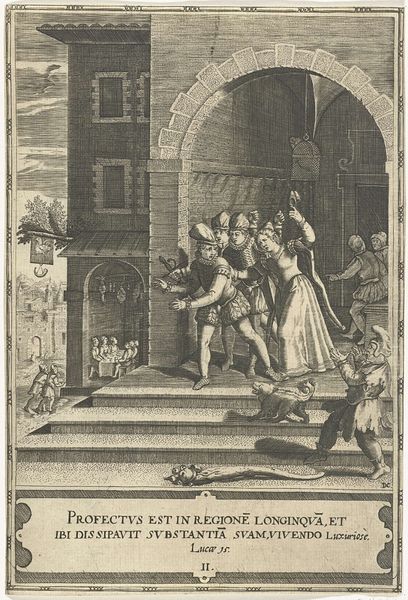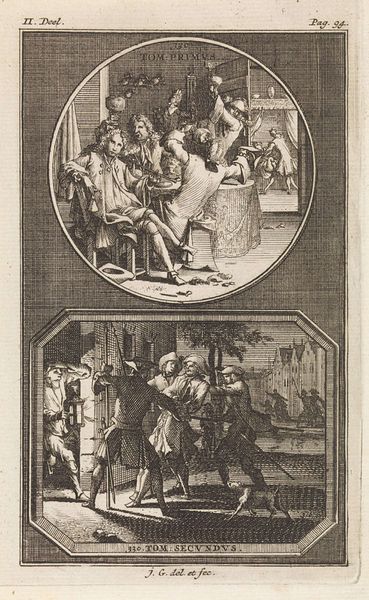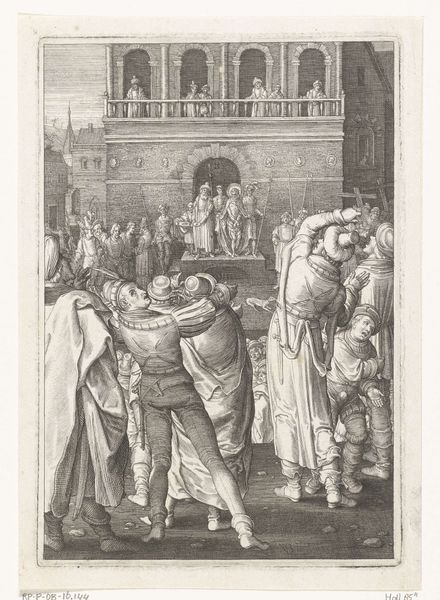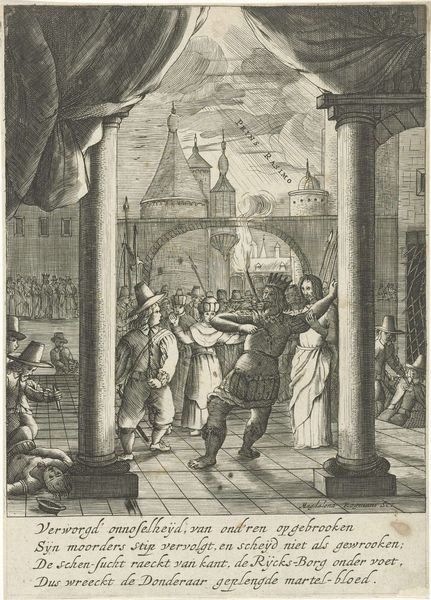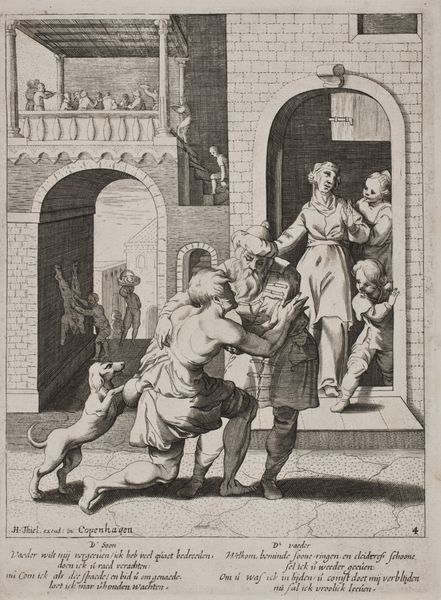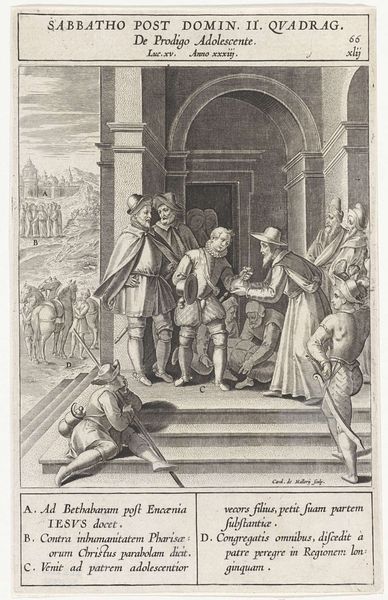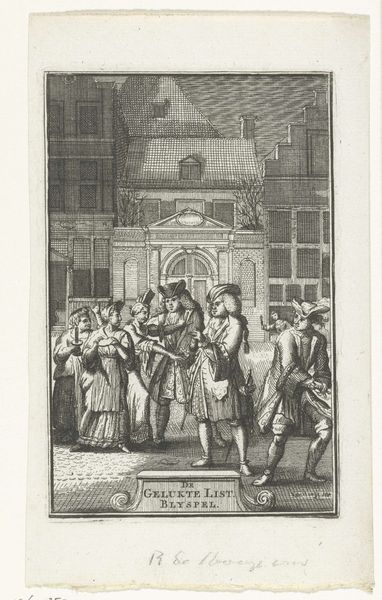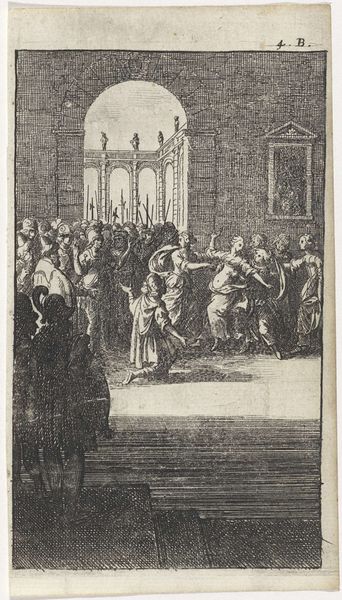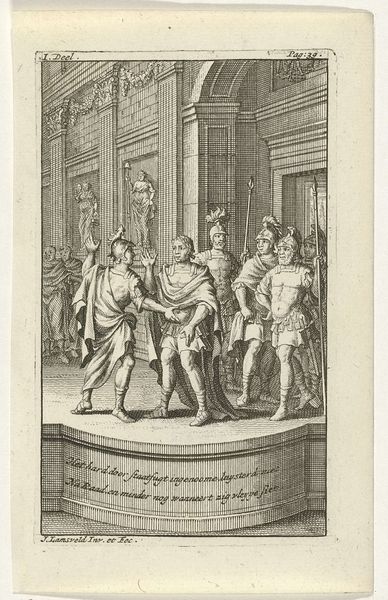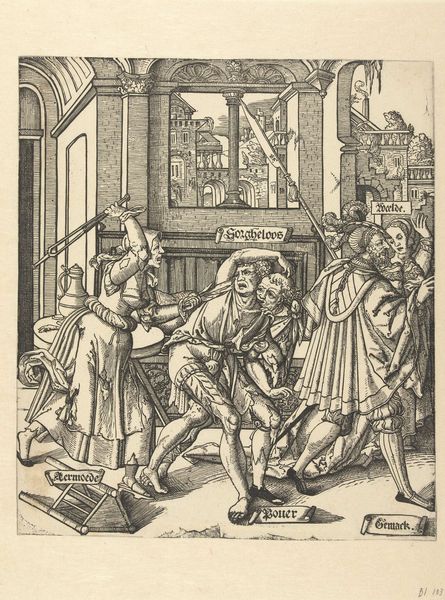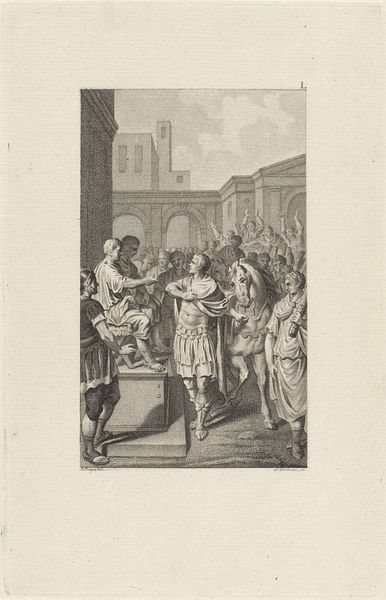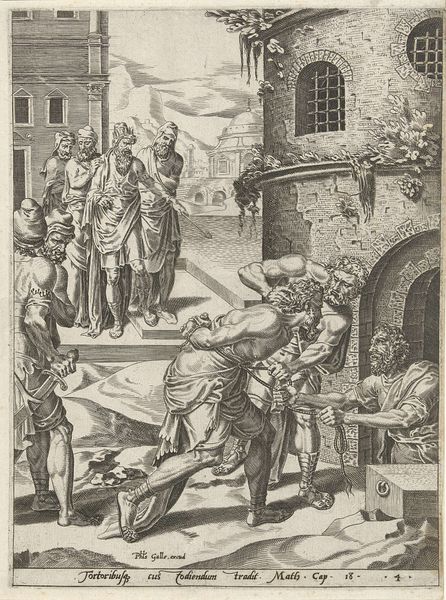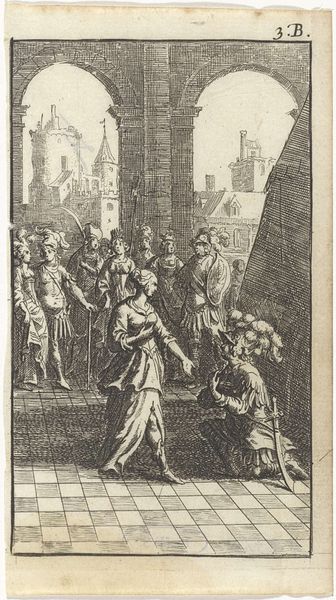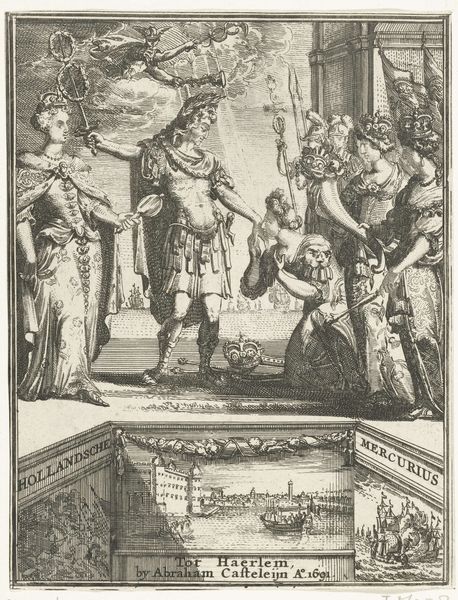
print, engraving
#
aged paper
#
narrative-art
#
parchment
# print
#
old engraving style
#
traditional media
#
figuration
#
11_renaissance
#
19th century
#
northern-renaissance
#
engraving
Dimensions: height 232 mm, width 146 mm
Copyright: Rijks Museum: Open Domain
Curator: Let’s pause here, shall we, at this small yet bustling print from 1593 entitled "The Prodigal Son Driven from the Brothel." It's rendered in the detailed engraving style so typical of Wierix, and housed right here in the Rijksmuseum. What catches your eye initially? Editor: What grabs me is how un-grand it is, you know? Morality tales are usually writ large, epic even. But here, the whole drama is crammed into this tiny space, giving it a really claustrophobic feel. There's such intensity! It feels less like instruction and more like overhearing a particularly juicy piece of gossip. Curator: It is deliciously voyeuristic, isn't it? The artist has filled it with incredible detail. There's the young man being quite literally ejected by the...well, the working girls and their minders. Note the rather gleeful jester egging them on! And observe the emblems and text scattered throughout; consider them carefully! They speak volumes about the story being told. Editor: That jester! Such an ancient archetype: the mocker, the truth-teller, observing the fall from grace with a kind of cynical glee. And the dog snarling at the son’s feet! Loyalty is a powerful symbol that dates far back and always reminds us what happens when social order breaks down. There's this whole visual language happening, commenting on excess and expulsion. Even those diners in the background seem to be partaking in a grotesque supper, fueled by the drama unfolding on the stairs. Curator: Yes! The table of onlookers really drives home the performative aspect of the son's shaming. Wierix masterfully compresses several layers of narrative into a single snapshot—the squandering of inheritance, the fleeting joys of indulgence, and the harsh consequences of ruin. You see all those complex emotions swirl, clash, and finally boil over. Editor: Thinking of this image as a reflection on public shaming really changes everything. How often are we both audience and actor in someone else’s misfortune? It asks us not just to pity the fallen son, but to consider our own roles within this spectacle. Perhaps we might re-examine ourselves in light of these archetypes? Curator: Precisely. It makes this modest engraving reverberate with unsettling contemporary relevance, doesn't it? A mirror reflecting not just the 16th century, but our own image too.
Comments
No comments
Be the first to comment and join the conversation on the ultimate creative platform.
